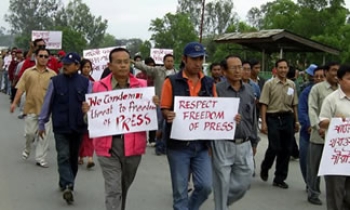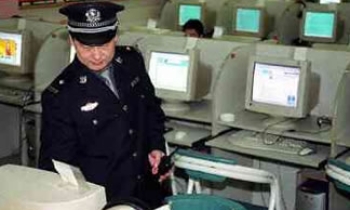The rapid evolution of the Media is changing the everyday life of consumers the world over, with its significance more evidenced in fast-growing nations like India. According to the latest Decision-Makers Survey 5 (DMS 5) conducted by ACNielsen ORG-MARG, the Media in India is gathering pace rapidly and is gaining progressive importance among key decision-makers.
With print media competing neck-to-neck with TV for advertising dollars, the Economic Times has gained significant ground, recording an increase in readership from 78 percent in 2004 to 91 percent this time round. The Economic Times is ranked first in 'average issue readership' amongst the business dailies, followed by Business Standard and Business Line.
DMS 5 brings together a composite understanding of the media habits and lifestyles of today's business leaders. A successor to the popular DMS 4, the current survey was conducted among senior executives designated as General Managers and above across India's top 500 private companies, top 100 public sector and 100 leading financial sector companies including banks, merchant bankers and foreign institutional investors (FII).
Aimed at better understanding this key target group, the DMS enables marketers to better identify the ideal channels for communicating to these high profile consumers and provides insight into their media habits - newspaper and magazine readership, TV viewership, radio listenership and Internet usage as well as lifestyle behavior and product ownership of the corporate elite whose average annual income is estimated at Rs 10 lakhs plus..
Measured by the time spent by corporate decision-makers reading them, the publications are also assessed in terms of their ability to involve readers. Among business dailies, The Economic Times is the most preferred newspaper, followed by Business Standard and Business Line (Table1). However, as compared to 2004, the percentage of regular readers of Economic Times (reading at least six issues in a week) has declined from 78 percent in 2004 to 50 percent in 2005. On average, corporate decision makers spends about 20 minutes reading business dailies.
Some of the other interesting things that the survey brings is that, as a newspaper Hindu has more readership amongst people working in Indian corporate, where as Financial Express enjoys strong readership amongst the Chairmen and Managing Directors. Business Line is popular amongst readers in South and also with people working in financial sector.
Faced with plethora of TV Channels, more corporate professionals are opting to watch news-based programs followed by business shows and current affairs (Table 2) with CNBC TV 18, followed by NDTV, topping the chart as the 'most watched business channel'. And the discerning corporate elite are most likely to watch them between 8 to 10 pm in the evening during the week.
"This presents a window of opportunity for advertisers of products and services to exploit in reaching India's ruling class. At a time when the Indian sub-continent's corporate elite are powering ahead in the global economy, the survey findings will definitely serve as an effective tool to devise effective marketing and communication strategies," observed Sarang Panchal, Executive Director, Customised Research ACNielsen South Asia.
In addition to the media module, the report also provides profiling information of product ownership and lifestyle behavior for the banking sector. The findings indicate that ICICI Bank is most preferable amongst younger corporate decision makers. The younger corporate decision makers also rate ICICI Bank as 'the most popular bank' for net banking and credit cards.
With total Internet penetration in single digits, Corporate Decision Makers' access to the Internet is certainly driving the trend. In 2005, Internet penetration among key decision makers increased to 81 percent from 66 percent in 2004. Although Internet usage is mainly for checking e-mail and catching up with the latest news, 11 percent of the corporate elite are also banking on the 'Net.
"This explains why more and more banks are looking at Internet banking as another attractive addition to their armory of delivery channels. Among the corporate echelons, the Internet is already fast becoming the most popular mode of banking among decision-makers. Hence these initiatives taken by banks can help marketers and advertisers devise the right strategy matrix to reach the corporate echelons," opined Panchal.
An analysis of the industry groups, performance, gross annual income and age of the corporate decision makers can also lend a better, more accurate focus to the marketing and media plans.









